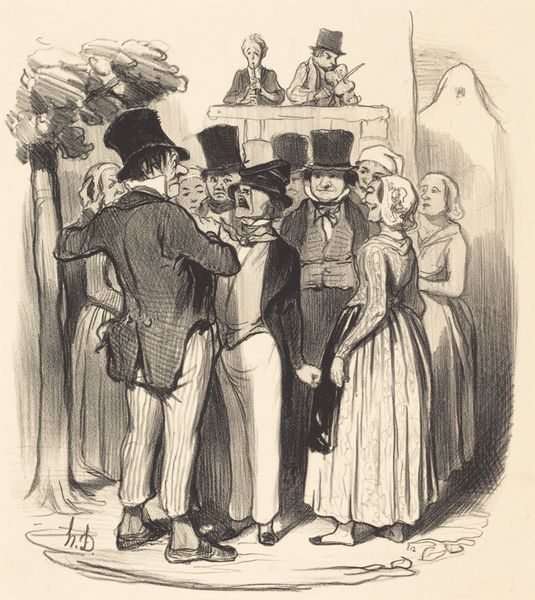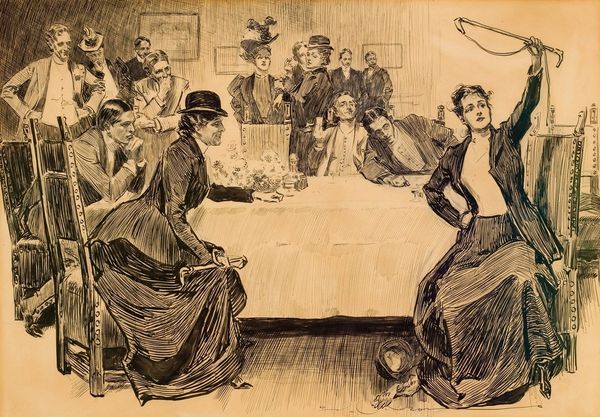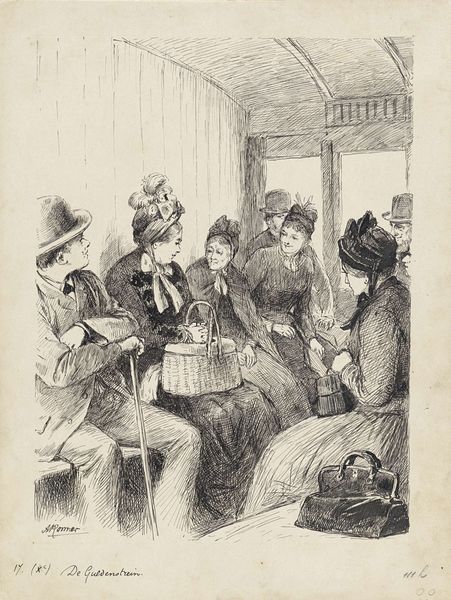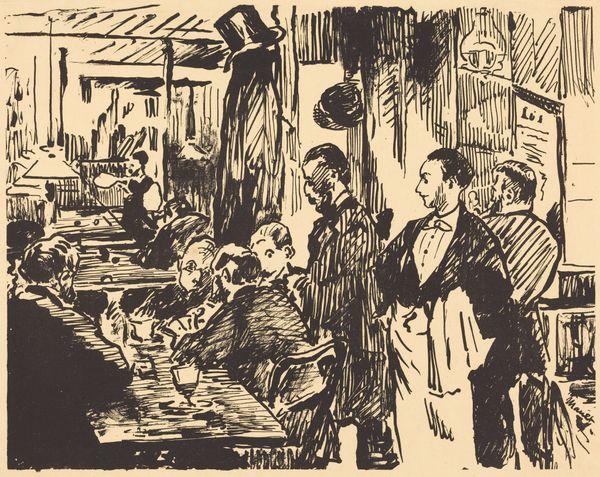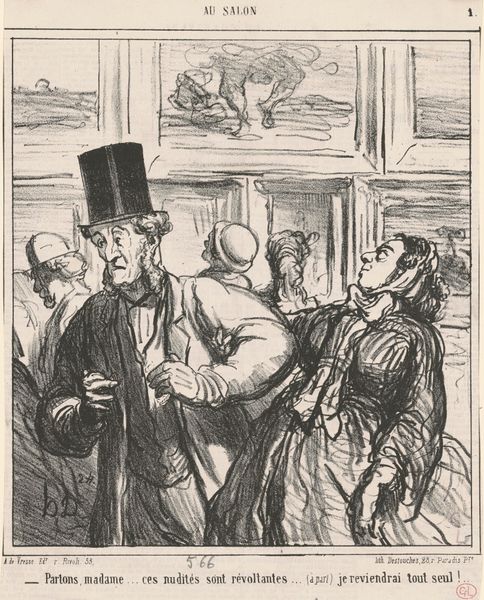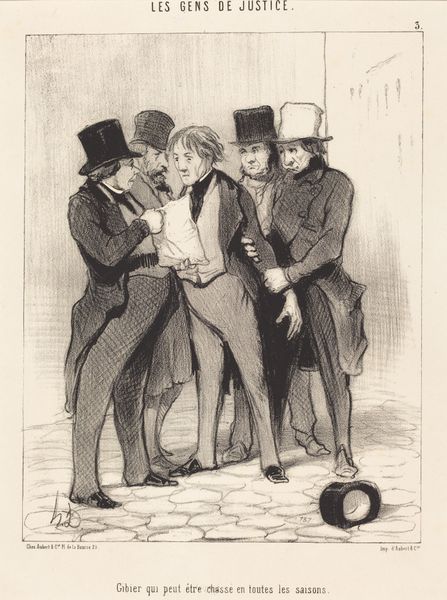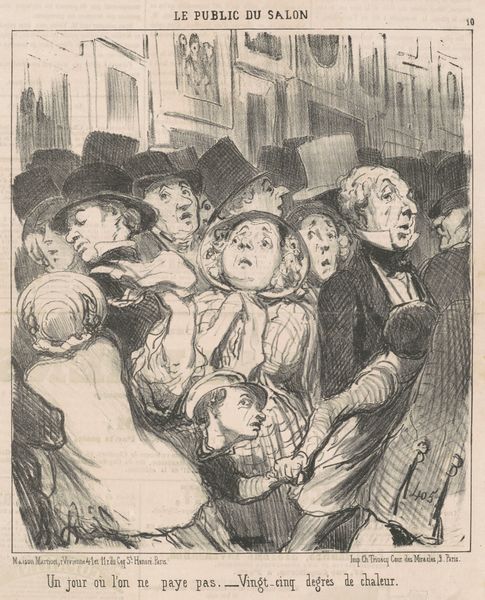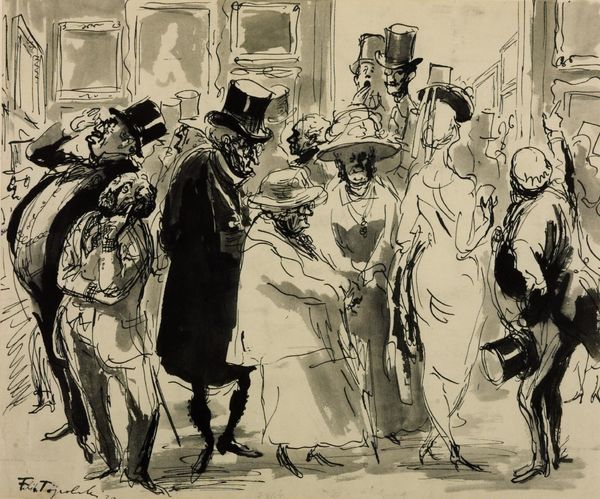
drawing, pencil, pen
#
portrait
#
drawing
#
comic strip sketch
#
imaginative character sketch
#
quirky sketch
#
impressionism
#
sketch book
#
figuration
#
personal sketchbook
#
sketchwork
#
pen-ink sketch
#
pencil
#
sketchbook drawing
#
pen
#
cityscape
#
genre-painting
#
storyboard and sketchbook work
#
sketchbook art
Copyright: Public Domain: Artvee
Curator: Welcome to "Chez Maxime", a sketch by Théophile Alexandre Steinlen. It's hard to pin down a precise date, but we place it stylistically near the turn of the 20th century. What impressions does it evoke for you? Editor: Well, instantly, it’s alive! The scene just hums with conversation and cigarette smoke. The artist has captured the fleeting moment. It feels so authentically Parisian – almost as if I can hear the clinking of glasses and feel the press of the crowd. Curator: Absolutely. Steinlen was deeply engaged with capturing Parisian life, especially among the working classes and bohemian circles. “Chez Maxime”, though depicting a seemingly upscale locale, reflects that interest. Note the mix of social classes portrayed—it suggests the public role of establishments like these, allowing diverse people to witness and influence each other. Editor: You’re right, it is a mixed bag. But, personally, what captivates me are the characters themselves! The expressions, the hats – each person has such a distinctive personality sketched with so few lines. They all seem caught in their own little dramas. That man smoking, for example— is he listening intently, or plotting something scandalous? Curator: It speaks to the power of suggestion in drawing, doesn't it? Steinlen skillfully employed line and shading to evoke both realism and a sense of theatricality. Drawings like these circulated widely via journals and print media at the time. Art was very much integrated with social commentary. Editor: I think, it's more intimate than just 'social commentary’ – to me it reads like peering into someone's personal sketchbook. Raw and unedited, it offers something that a more polished painting might conceal. Look at the nervous energy in those sketchy lines… there’s passion in here! Curator: And there’s a deliberate political intent too. The representation of public life like this helped frame debates about the changing nature of social interactions, leisure, and class boundaries in Paris. Places like Chez Maxime became battlegrounds— symbolic, at least— in these cultural debates. Editor: Huh. Well, whatever motivated Steinlen, this quick and fluid piece lets my mind roam free, crafting endless backstories and wondering about what happens next when I look at it. That to me is the pure beauty and joy of sketchbook art, in general. Curator: A stimulating reminder that art history blends factual understanding and emotional connections, doesn’t it? Editor: Absolutely, let's leave it there – a thought that encapsulates how everyone brings their personal experiences to understanding such art.
Comments
No comments
Be the first to comment and join the conversation on the ultimate creative platform.
